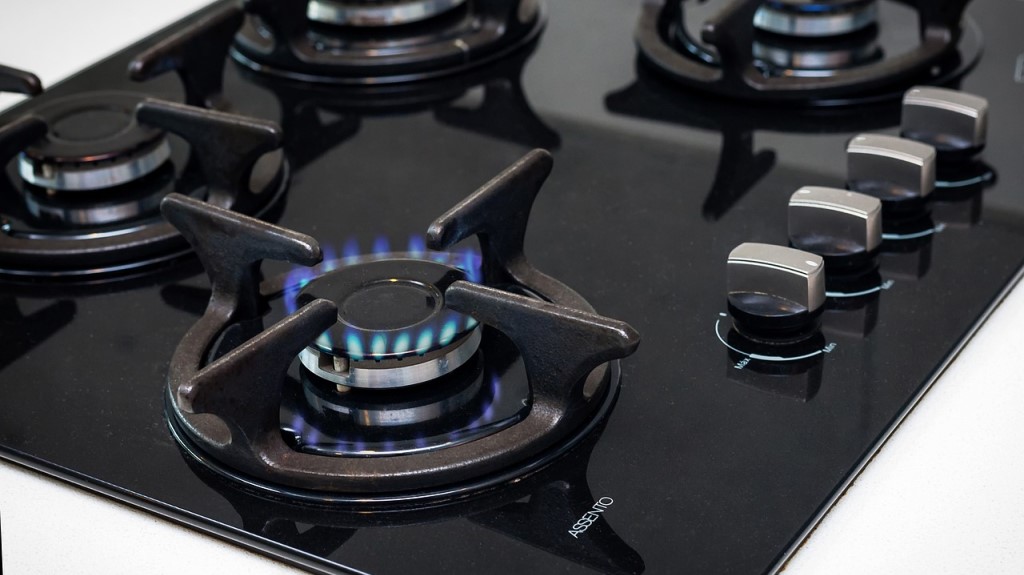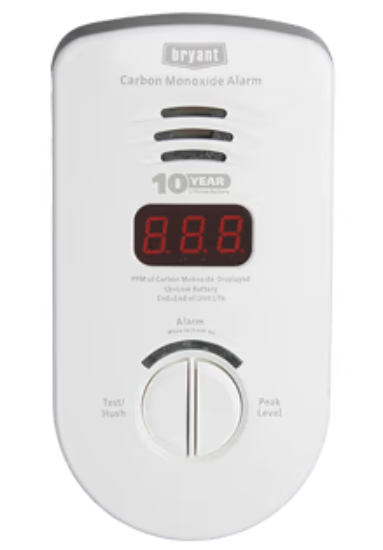
A carbon monoxide (CO) alarm is one of the most critical safety devices in your home. When it starts beeping, it’s not just a random noise—it’s a potential life-saving warning. Carbon monoxide is a silent, odourless, and invisible gas that can cause severe illness or even death if it goes undetected. Recognizing what the alarm beeps mean and how to respond can make all the difference in protecting your family.
In this post, we’ll break down everything you need to know about carbon monoxide alarms: what triggers them, the importance of responding promptly, and how to spot the signs of carbon monoxide poisoning. We’ll also answer common questions, such as whether you should call 911 when the alarm sounds, how to ensure your detector is working, and whether simply opening a window is enough to mitigate a CO leak. By the end, you’ll feel confident about keeping your home safe from this invisible danger.
- Carbon Monoxide Alarm: What the Beeps Mean
- What Triggers a Carbon Monoxide Alarm?
- Should I Call 911 if My Carbon Monoxide Alarm Goes Off?
- What Are the Warning Signs of Carbon Monoxide Poisoning?
- How to Tell if Your Carbon Monoxide Detector Is Working?
Keeping your furnace up-to-date and properly maintained is one of the most effective ways to prevent carbon monoxide from entering your home. Contact us today to learn more about how we can help protect your home from CO risks.
Important Note: This article is for general informational purposes only and does not constitute medical advice. Always consult your carbon monoxide detector’s user manual and labels for specific guidance on your device’s functionality and safety instructions.
Carbon Monoxide Alarm
1. Carbon Monoxide Alarm: What the Beeps Mean
Watch the above video to learn more about what your carbon monoxide alarm beeps mean.
Not all carbon monoxide detectors have the same beep patterns, but many follow standardized signals to alert you to specific situations. Understanding these sounds can help you respond quickly and appropriately to protect your family. Here’s a breakdown of common beep patterns and what they mean:
A) 4 Loud Beeps and a Pause
What It Means:
This is a critical alarm indicating the presence of dangerous levels of carbon monoxide in your home.
What to Do:
- Evacuate everyone immediately, including pets.
- Call 911 or your local emergency services from outside the house.
- Do not re-enter the home until professionals confirm it is safe.
B) One Beep or Chirp Every Minute
What It Means:
This typically signals that the detector’s batteries are low or the device itself requires maintenance.
What to Do:
- Replace the batteries immediately if it’s a battery-powered detector.
- If the chirping continues after replacing the batteries, consult the user manual or contact the manufacturer.
- This could indicate that the device has reached the end of its lifespan.
C) Multiple Beeps Every 30 Seconds
What It Means:
This often indicates a malfunction or error in the device.
What to Do:
- Check the user manual for troubleshooting steps specific to your detector.
- If the issue persists, replace the detector or contact the manufacturer for support.
Beep Patterns Can Vary
Different brands and models of carbon monoxide detectors may use slightly different beep patterns. Always refer to the instructions and labels that come with your specific device for exact meanings and recommended actions.
Take Every Alert Seriously
Carbon monoxide is a colourless, odourless, and potentially fatal gas. Even if you’re unsure what the alarm means, it’s better to err on the side of caution. Familiarize yourself with your detector’s signals, and test the device regularly to ensure it’s working correctly.
2. What Triggers a Carbon Monoxide Alarm?

Poorly maintained appliances like gas stoves can develop leaks or emit incomplete combustion gases, leading to carbon monoxide buildup.
A carbon monoxide (CO) alarm is designed to detect the presence of carbon monoxide in your home and alert you before it reaches dangerous levels. There are several potential causes for a CO alarm to sound, ranging from actual leaks to false alarms. Here’s a breakdown of what can trigger your alarm and what steps you can take:
A) Malfunctioning or Poorly Maintained Appliances
Examples:
Furnaces, water heaters, gas stoves, fireplaces, and boilers.
When these appliances aren’t maintained, they can develop leaks or emit incomplete combustion gases, leading to carbon monoxide buildup.
What to Do:
- Schedule regular maintenance for all fuel-burning appliances.
- Ensure proper installation and venting of these systems.
B) Blocked or Damaged Vents and Chimneys
Examples:
Chimney obstructions, clogged dryer vents, or blocked flues.
CO can back up into your home if ventilation systems are obstructed or damaged.
What to Do:
- Inspect and clean vents and chimneys regularly.
- Remove debris, nests, or snow that may be blocking the airflow.
C) Running Vehicles or Engines Indoors
Examples:
Cars, lawnmowers, or generators are left running in an attached garage or enclosed space.
These can quickly fill the area with CO, even if the door is open.
What to Do:
- Never run engines or vehicles in enclosed spaces, even briefly.
- Install CO alarms near the entrance to garages to detect potential leaks.
D) Cracked or Leaking Heat Exchangers
Examples:
Cracks in your furnace’s heat exchanger.
A damaged heat exchanger can allow carbon monoxide to escape into your home’s air supply.
What to Do:
- Have your furnace inspected annually by a certified technician.
- Replace old furnaces or heat exchangers if damage is found.
E) Improper Use of Space Heaters or Grills
Examples:
Use a charcoal grill, propane heater, or portable generator indoors.
These devices are not meant for indoor use and can produce significant amounts of CO.
What to Do:
- Only use space heaters and grills designed for indoor use and ensure they are properly ventilated.
- Use generators outdoors, far from windows or doors.
F) False Alarms
Examples:
Malfunctioning CO detector, environmental factors like steam or humidity, or end-of-life alerts.
Sometimes, the alarm may sound for reasons unrelated to actual CO levels.
What to Do:
- Test your CO alarm regularly to ensure it’s functioning correctly.
- Replace the unit if it’s expired or shows consistent errors.
Take Every Alarm Seriously
If your carbon monoxide alarm goes off, always treat it as a potential emergency until confirmed otherwise. Evacuate your home and call professionals to assess the situation. Regular maintenance and proper usage of appliances are your best defense against CO hazards.
3. Should I Call 911 if My Carbon Monoxide Alarm Goes Off?

Call 911 if your carbon monoxide alarm goes off and you suspect a CO leak.
Yes, you should call 911 if your carbon monoxide (CO) alarm goes off and you suspect a CO leak. Carbon monoxide is a life-threatening gas, and prompt action is critical to protect yourself and your family. Here’s what you need to know about responding to a CO alarm:
When to Call 911
If the Alarm Sounds Continuously (4 Beeps and a Pause):
This indicates a dangerous level of carbon monoxide. Evacuate everyone from your home immediately, including pets, and call 911 from a safe location.
If Anyone Shows Symptoms of CO Poisoning:
Symptoms may include dizziness, headache, nausea, confusion, or difficulty breathing. These signs warrant immediate medical attention.
If You Cannot Identify the Source of the Alarm:
Even if no symptoms are present, call emergency services to investigate. They have the tools and expertise to detect CO levels and locate the source.
What Happens When You Call 911
Emergency responders will:
- Check your home for carbon monoxide levels using specialized equipment.
- Identify the source of the CO leak.
- Advise you on whether it’s safe to re-enter your home.
What NOT to Do
Don’t ignore the alarm:
Even if it’s a false alarm, always treat it as an emergency until confirmed otherwise.
Don’t open windows and stay inside:
Ventilating the home without evacuating can delay your response and make it harder for professionals to identify the issue.
Follow-Up After Calling 911
Once the emergency is resolved:
- Have your fuel-burning appliances inspected and repaired by a professional.
- Ensure your CO detector is working properly. Replace it if it’s faulty or expired.
Calling 911 is the safest and most responsible action when your CO alarm goes off. Carbon monoxide is a silent danger, and it’s always better to be cautious and protect your household.
4. What Are the Warning Signs of Carbon Monoxide Poisoning?

Early symptoms include headache and dizziness.
Carbon monoxide (CO) poisoning occurs when you inhale too much of this odourless, colourless, and tasteless gas, which prevents oxygen from circulating properly in your body. Recognizing the early warning signs can save lives, as symptoms often mimic common illnesses and may escalate rapidly.
Early Symptoms of Carbon Monoxide Poisoning
The following are some of the early symptoms of carbon monoxide poisoning:
- Headache: A dull headache is one of the most common early indicators of CO exposure.
- Dizziness or Lightheadedness: You may feel unsteady or faint.
- Nausea and Vomiting: These symptoms are often mistaken for food poisoning or a stomach virus.
- Fatigue or Weakness: CO reduces the amount of oxygen your body receives, leaving you feeling unusually tired or weak.
- Shortness of Breath: Difficulty breathing, especially during physical activity, can be an early sign.
Advanced Symptoms of Prolonged Exposure
If CO exposure continues without intervention, symptoms may worsen and include:
- Confusion or Difficulty Thinking: Oxygen deprivation can impair brain function.
- Blurred Vision: Your vision may become hazy or distorted.
- Chest Pain: People with heart conditions may experience worsening chest pain.
- Loss of Consciousness: High levels of CO can cause fainting, which can be life-threatening if help is not immediately available.
- Seizures or Coma: Severe exposure can result in long-term brain damage or death.
What to Do if You Suspect Carbon Monoxide Poisoning
- Call 911: Seek emergency medical help for yourself or others showing symptoms, even if the symptoms seem mild.
- Do Not Re-Enter: Wait for emergency responders to declare the area safe.
- Seek Medical Attention: Even after exposure ends, it’s critical to have a medical evaluation, as symptoms can reappear or worsen over time.
Long-Term Health Effects
Prolonged or severe exposure to carbon monoxide can lead to permanent damage, such as:
- Neurological problems (memory loss, difficulty concentrating).
- Heart complications.
- Chronic headaches or fatigue.
Prevention Is Key
The best way to protect yourself and your family is by installing and maintaining carbon monoxide detectors, ensuring proper ventilation, and scheduling regular inspections of fuel-burning appliances. Knowing the warning signs of CO poisoning could save your life or the lives of your loved ones.
5. How to Tell if Your Carbon Monoxide Detector Is Working?

You should test your carbon monoxide alarm regularly.
To ensure your carbon monoxide (CO) detector is working properly, follow these steps:
Test the Detector Regularly:
Most detectors have a test button. Press it to ensure the alarm sounds. If it doesn’t, the battery may be dead or the detector may need replacing.
Check the Expiry Date:
CO detectors don’t last forever. They typically have a lifespan of 5 to 7 years. Check the manufacturer’s instructions for the expiry date and replace the detector as needed.
Change the Batteries:
Even if the detector seems to be working, change the batteries at least once a year or when you hear a low-battery warning.
Check for Proper Placement:
Ensure the detector is installed in the right place, typically near sleeping areas, but not too close to gas appliances or vents that may trigger false alarms.
Look for a Digital Display (if available):
Some models have a digital display that shows CO levels. If the detector shows anything above 0 ppm (parts per million), it may be detecting elevated CO levels and you should take immediate action.
Test with a CO Source (If Safe):
If you want to confirm it’s working, use a small amount of carbon monoxide in a controlled setting, like near a stove or car exhaust (but be cautious about safety and never test in an enclosed space without ventilation). Alternatively, you can buy test kits designed for this purpose.
Remember, if the alarm goes off, evacuate immediately and call emergency services. CO poisoning is a serious health hazard.
A Well-Maintained Furnace Is Your Best Defense Against CO Leaks: Call Service 1st

Keeping your furnace up-to-date and properly maintained is one of the most effective ways to prevent carbon monoxide from entering your home. At Service 1st, we offer comprehensive maintenance plans and expert servicing to ensure your system operates safely and efficiently. Contact us today to learn more about how we can help protect your home from CO risks.
We also offer emergency services, so if your carbon monoxide detector is beeping and it turns out to be a problem with your furnace, we can help repair or replace it if necessary.
When you choose to work with Service 1st, you’ll be working with a company that has over 30 years of experience serving homeowners in the Cambridge area. We value honesty, professionalism, and always provide homeowners with the highest quality products and services. We are an Elite Bryant Factory Authorized Dealer and have received the prestigious Circle of Champions award from Bryant.







